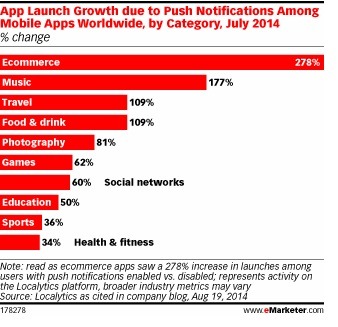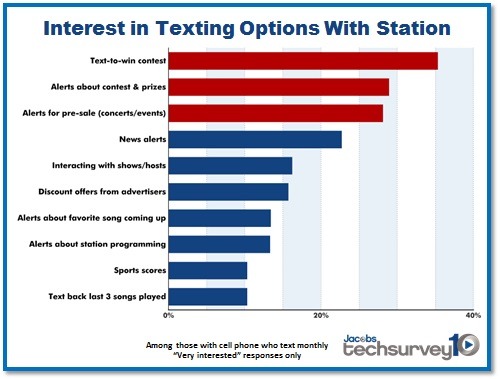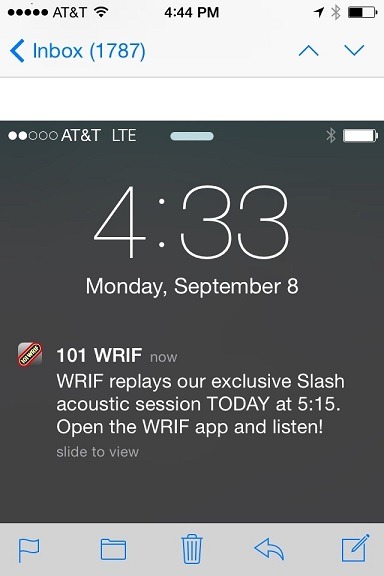A new study from statistical app tracker Localytics reveals something we’ve been seeing for a few years now on the jācapps side of our company:
Push notifications beget greater app engagement – by a large margin. And even better news is that music-centric apps perform even higher than the norm. You can see how the data breaks down by category in the eMarketer chart below:
 This data confirms the notion that simply motivating a listener to download your app is just the first step toward better engagement. The key is that consumers put your app in their “go-to” category. And apps that focus on music are especially likely to benefit from the aid of timely push messages.
This data confirms the notion that simply motivating a listener to download your app is just the first step toward better engagement. The key is that consumers put your app in their “go-to” category. And apps that focus on music are especially likely to benefit from the aid of timely push messages.
We investigated text alerts in Techsurvey10 earlier this year. Among the vast majority of cell phone owners who text, we saw some incredible interest in particular messaging areas, bolstering the case that relevant information via mobile can make a station more essential to its audience:
Contests are clearly appealing, but so are news alerts, host interactivity, coupons, and heads-up about favorite songs. Of course, the results differ significantly by format and even by individual stations. But you get the point. Relevant, desired text messaging can amplify app interaction – and it can stimulate on-air tune-in.
But it starts with developing a mindset that gives texting a seat at the content table. So often, programmers plan great on and off-air events, only to ignore the immediate call-to-action benefits of texting.
WEEI/Boston used text messaging aggressively at the MLB trade deadline to alert Red Sox Nation about pending trades and real-time transactions and deals. The result was a spike both in app traffic and downloads as sports fan told their friends.
The text below from the WRIF programming team is another example of alerts that can be used to encourage tune-in. We keep saying that a goal – especially in PPM markets – is to create occasions. Text messaging is that real-time invitation.
As the data clearly shows, your audience is never more than a few inches away from their mobile phones. Texting databases that can instantaneously connect with fans may be more powerful than any other marketing tool available to stations and programmers.
But text messaging can be “powerful voodoo,” and content managers have to be careful not to overuse push messaging. It’s important that “being pushy” is all about relevant and timely content and information. There’s a fine line between useful content and messages that are more in the “boy who cried wolf” zone.
It’s good to be pushy and smart with text notifications.
- Media And Technology In 2025: Believe It Or Not! - April 18, 2025
- In Radio, You Just Never Know - April 17, 2025
- The Secret To Making A Great Podcast (And Great Radio) - April 16, 2025






Several people have noted to me that Apple doesn’t permit “notifications” for advertising, promotion, etc. However, this is still a very gray area. I would position WRIF’s message as not promotion, but as a “program reminder,” which would be permitted. Additionally, there are several large companies — Foursquare comes to mind — using push notifications to alert users about a particular restaurant they are near, or a store in the area. These, again, fall into that gray area. They’re not really ads as they don’t come from the store, rather through a third party, but they certainly function as a form of advertising. I think the rules for this will gel over time, and the key to how that comes together is how apps do or do not abuse the notification function. If users don’t mind, I don’t think Apple will tighten the rules, but if our phones begin binging and bonging several times an hour with new promotions, they’ll have to crack down.
Bob, appreciate the clarification and the perspective.